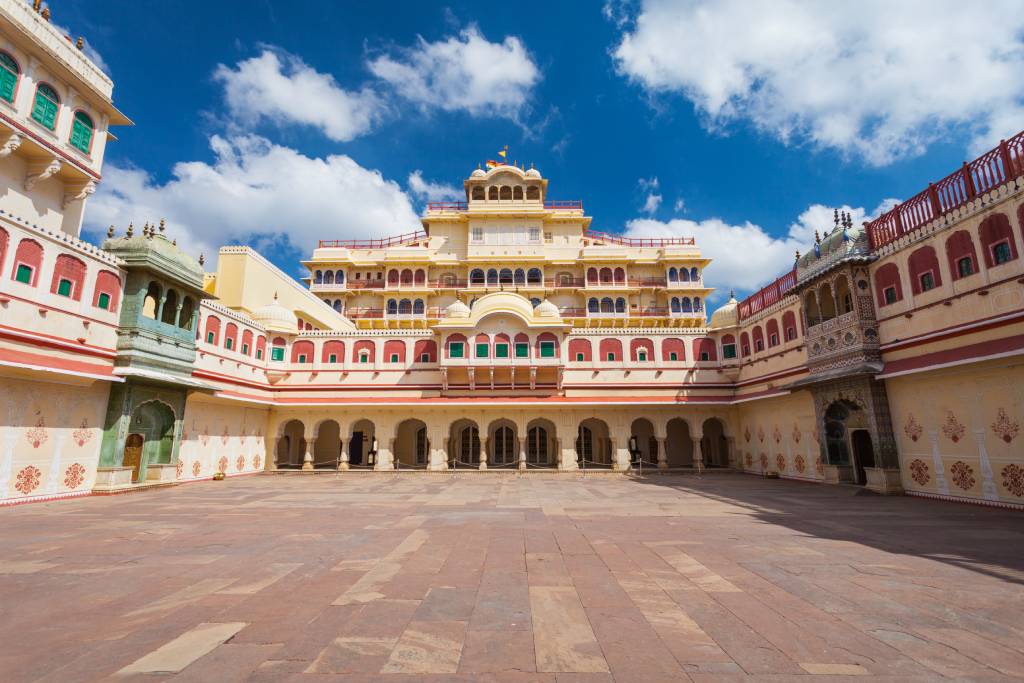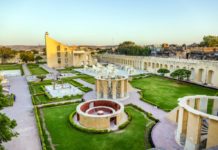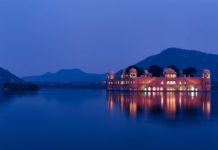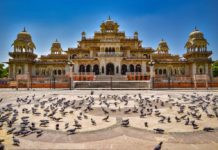Rajasthan is the land of majestic breath-taking royalty, abundant with grandiose royal palaces and fascinating aesthetic architecture that leaves you captivated and spellbound. Amongst these numerous mesmerizing palaces, one stands out for its amalgamation of Mughal and Rajputi architecture and its alluring history.
Established between 1729 and 1732 by the then ruler Maharaja Sawai Jai Singh II, the City Palace of Jaipur is located deep into the centre of the high walled city of Jaipur which is also the capital of the state of Rajasthan presently. The palace is an architectural beauty housing numerous buildings, courtyards, galleries, temples and gardens that narrate the brief history of the Rajputs and the royal family of Jaipur.

The History of Jaipur and Its Royal Palace
- According to historical outlines, the construction of city palace was initiated by Maharaja Sawai Jai Singh II who established the outer walls of the palace on a royal hunting ground which was 5 miles south from his then ruling capital, Amber.
- Because of the booming population and water shortage, he relocated his capital from Amber to Jaipur in the year 1727. He, under the guidance of Vidyadar Bhattacharya, a Bengali architect, planned the city in 9 blocks in consonance with the Vaastushastra texts and hence gave birth to the city of Jaipur.
- Further architectural additions were made by succeeding rulers to the palace complex up until the 20th century.
Things to Do at This Historic Complex
- Browse the Royal Rajputi fashion at Mubarak Mahal Museum:
Built-in the late 19th century by Maharaja Madho Singh II, the building is a fusion of Rajputi, Islamic and European architecture. This reception building is now transformed into a textile museum that illustrates the antique royal costumes and uniforms of the royal family including Benaras silk sarees, delicate Pashmina shawls and various other pieces of garments embellished with Sanganeri prints and folk embroideries.
- Travel back in time through the peacock gate of Chandra Mahal:
The Chandra Mahal is another symbolic building in the palace complex constructed by Maharaja Jai Singh. Each floor of this seven-storied building is adorned in a unique and distinctive fashion with floral designs, mirror decorations on the walls and ceilings, artistic paintings, and much more. Moreover, each floor has its own specific name, which are Sukh Niwas, Shobha Niwas, Pitam Niwas, Chhavi Niwas, Ranga Mandir, Shri Niwas, and Mukut Mahal.Since the present royal family of Jaipur still occupies most of the palace building, only the ground floor of the Chandra Mahal is open for the public. It has a museum showcasing the antique articles, carpets, and manuscripts which have been used by the royal families and their descendants. Though, for a price of INR 2,500 per head, you can still buy a special pass which can give you exclusive access to some of the private rooms in Chandra Mahal under a guided tour with a personal guide.
- Live through the wars and luxuries of the Rajputana kingdom at Maharani Palace and Bagghi Khana:
Maharani Palace or the palace of the Queen of the royal family is now used as a museum to vitrine weapons and armouries used in the wars. Pay attention to the intricate folk Rajasthani metal arts on the weapons like engraving and Koftagari. You will also come across some unique weapons like scissor action daggers or swords attached to pistols which are found only in the Rajputi battle history.
Bagghi Khana is another museum that displays antique carriages and chariots of the royal family, also known as ‘Bagghi’. One bagghi noticeably stands out from the rest of the collection which is often called the Victoria Bagghi, and it was gifted to Maharaja by Prince Whales in 1876. - Shop and eat like the kings in the in-house facilities:
After visiting the entire palace, you’re going to end up being fascinated and enthralled with the royalty of Rajputi culture. If you wish to take a slice of this culture along with you, you can always buy a perfect piece of handmade heritage craft or clothing at ‘Palace Atelier’ inside the complex building.
The palace also offers an in-house restaurant named ‘Baradari’ that serves delicious meals to the visitors.

How to Reach the Palace?
- It is fairly easy to locate and get to the Jaipur City Palace. You can use a cab/taxi service from anywhere in the city but if you want to ditch the traffic, go for three-wheeler rickshaws or motorcycle cabs.
- There are two gates for public use, namely, Virendra Pol and Udai Pol. Choose to enter from Virendra Pol as it directly leads to the Mubarak Mahal and saves a lot of your time.
Our Exclusive Tips for a Better Experience
- Wear comfortable and flat shoes as the palace complex demands a lot of walking.
- The ticket system is a bit complex as you need different tickets for exterior view and the museums. So, make sure you enquire about your tickets and ensure that you’ve bought the right one.
- The palace complex is disable-friendly.
Historical Places to Visit Nearby
- Hawa Mahal: Situated on the edge of the city this unique honeycomb beehive structure was built in 1799 by Maharaja Sawai Pratap Singh for the royal ladies to enjoy the festivals from its windows.
- Albert Hall Museum: Albert Hall Museum is a treat for historians, but if you like to adore the architectural beauty, then this must be added to your list of places to visit in Jaipur. Sir Samuel Swinton Jacob was the man who designed this magnificent structure.










